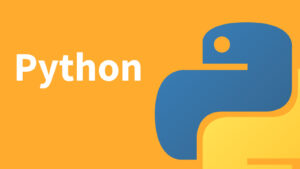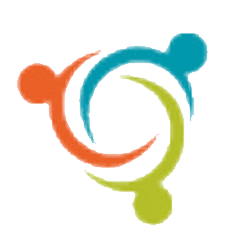
Certificate course in Python
Live-online class schedule
Lorem ipsum dolor sit amet, consectetur adipiscing elit. Ut elit tellus, luctus nec ullamcorper mattis, pulvinar dapibus leo.
- Overview of Python
- Installing Python
- Running Python programs
- Data types in Python
- Variables, operators and expressions
- Conditional statements
- Loops and iterations
- Functions and arguments
- Scope of variables
- Built-in functions and modules
- Creating modules and packages
- Handling exceptions
- Lists, tuples and sets
- Dictionaries
- Manipulating sequences
- Working with files
- Input and output
- Object-oriented programming concepts
- Defining classes and objects
- Inheritance and polymorphism
- Overloading operators
- Overview of GUI programming
- Tkinter and other GUI libraries
- Creating GUI applications
- Handling events and callbacks
- Overview of web scraping
- Retrieving web pages with Python
- Parsing HTML and XML
- Scraping data from web pages
- Web automation with Selenium
- Introduction to data analysis
- NumPy and Pandas libraries
- Reading and manipulating data
- Data visualization with Matplotlib and Seaborn
About the course
Learning Python offers several compelling reasons and benefits. Here are some key reasons why learning Python can be advantageous:
Versatility and Ease of Use: Python is known for its simplicity and readability, making it one of the most beginner-friendly programming languages. It has a clean and straightforward syntax that emphasizes readability, making it easier to write and understand code. Python’s versatility allows it to be used in a wide range of applications, including web development, data analysis, scientific computing, artificial intelligence, machine learning, automation, and more.
Wide Adoption and Community Support: Python has gained immense popularity and widespread adoption in both industry and academia. It has a large and active community of developers, which means there are abundant resources, libraries, frameworks, and tools available to support Python development. This community support makes learning Python easier and provides access to a wealth of knowledge and assistance.
Data Science and Analytics: Python has become the de facto language for data science and analytics. It offers powerful libraries and frameworks, such as NumPy, pandas, and scikit-learn, that facilitate data manipulation, analysis, and modeling. Python’s extensive ecosystem and the availability of specialized libraries like TensorFlow and PyTorch have made it the preferred choice for machine learning and deep learning applications.
Automation and Scripting: Python is widely used for automation and scripting tasks. Its simplicity and ease of use make it ideal for automating repetitive tasks, creating scripts, and building workflow automation systems. Python can be used to automate tasks such as file operations, web scraping, data processing, and much more, saving time and effort in various domains.
Web Development: Python offers frameworks like Django and Flask that simplify web development. These frameworks provide ready-to-use components and follow the “Don’t Repeat Yourself” (DRY) principle, enabling developers to build robust and scalable web applications quickly. Python’s simplicity and versatility make it an excellent choice for web development projects.
Prototyping and Rapid Development: Python’s ease of use and availability of numerous libraries and frameworks make it ideal for prototyping and rapid development. The language allows developers to quickly implement and test ideas, iterate on solutions, and build minimum viable products (MVPs) efficiently. Python’s dynamic nature and extensive standard library significantly speed up the development process.
Career Opportunities: Python’s widespread adoption and versatility have resulted in a high demand for Python developers. Learning Python can open up a wide range of career opportunities in various industries, including software development, data science, web development, automation, machine learning, and more. Python skills are highly marketable and sought after by employers.
Integration and Extensibility: Python can be easily integrated with other programming languages, enabling developers to combine Python with existing systems and technologies. It offers robust integration capabilities and supports various communication protocols, making it a preferred choice for building interoperable software systems. Python also allows developers to write extensions in other languages like C/C++, enhancing performance and extending its capabilities.
Community and Collaboration: Python’s large and active community fosters collaboration and knowledge sharing. Developers can easily find help, share code snippets, and collaborate on open-source projects. Python’s community-driven development model ensures continuous improvements, updates, and a rich ecosystem of libraries and tools.
Educational and Learning Support: Python is widely used in educational institutions as an introductory programming language. Its simplicity and readability make it an excellent choice for beginners learning programming concepts. The availability of educational resources, tutorials, and online courses specifically designed for learning Python further supports its use in educational settings.
Understanding Python Basics: The course aims to provide students with a solid foundation in the fundamental concepts of the Python programming language. This includes topics such as variables, data types, operators, control structures (if statements, loops), and basic input/output operations.
Writing Python Programs: Students will learn how to write and execute Python programs. They will gain hands-on experience with the Python syntax, writing code to solve simple problems and perform basic tasks.
Introduction to Data Structures: The course typically introduces students to essential data structures in Python, such as lists, tuples, dictionaries, and sets. Students will learn how to create, manipulate, and access data stored in these structures.
Functions and Modules: Students will explore the concept of functions in Python, including how to define and use functions to organize code and perform specific tasks. Additionally, they may learn about modules and how to leverage existing modules or create their own for code organization and reusability.
File Handling: The course may cover file input/output operations, teaching students how to read data from files, write data to files, and manipulate file contents using Python.
Introduction to Object-Oriented Programming (OOP): Many basic Python courses introduce students to the principles of OOP. They learn about classes, objects, attributes, methods, and inheritance, which are fundamental concepts in OOP.
Error Handling: Students will learn how to handle and manage errors and exceptions that may occur during program execution. They will explore techniques for identifying and addressing common programming errors.
Introduction to Libraries and Packages: The course may introduce students to popular Python libraries and packages, such as NumPy, Pandas, and Matplotlib. Students will learn how to use these libraries to perform data manipulation, analysis, and visualization.
Basic Web Scraping: Some introductory Python courses touch upon web scraping, teaching students how to extract data from websites using Python libraries like BeautifulSoup.
